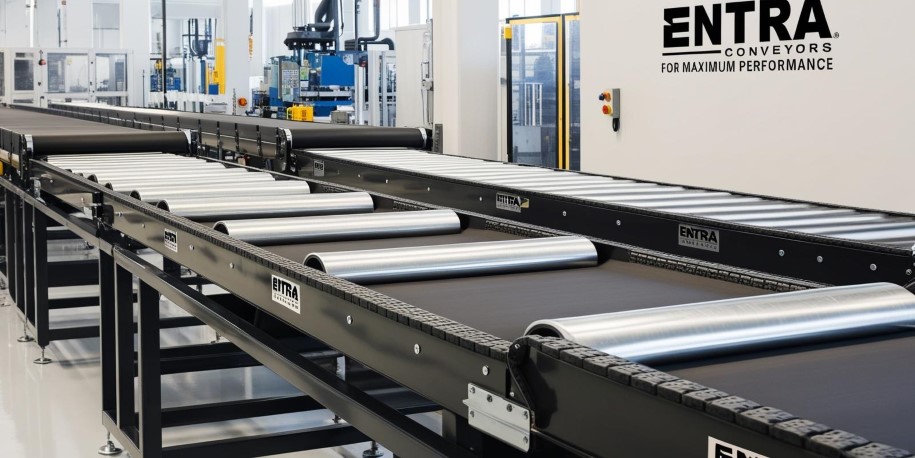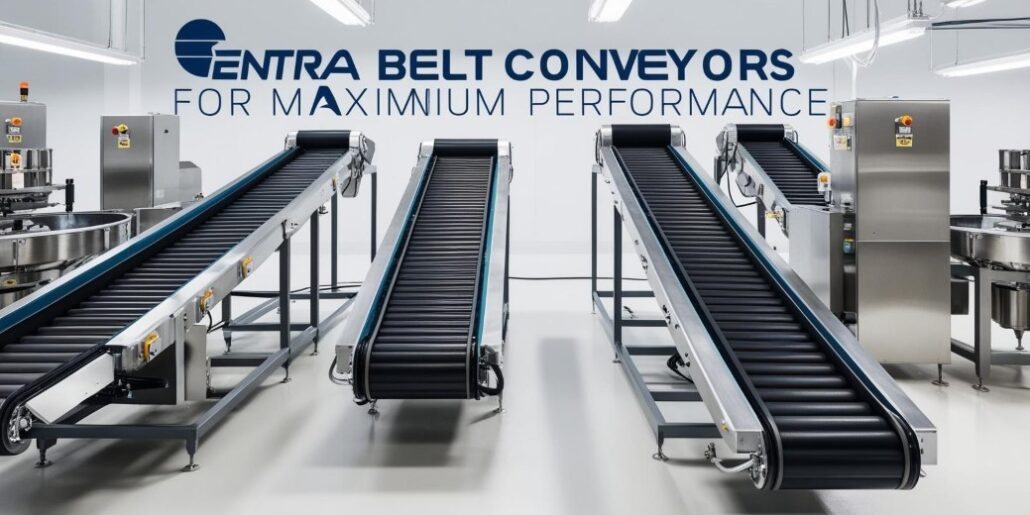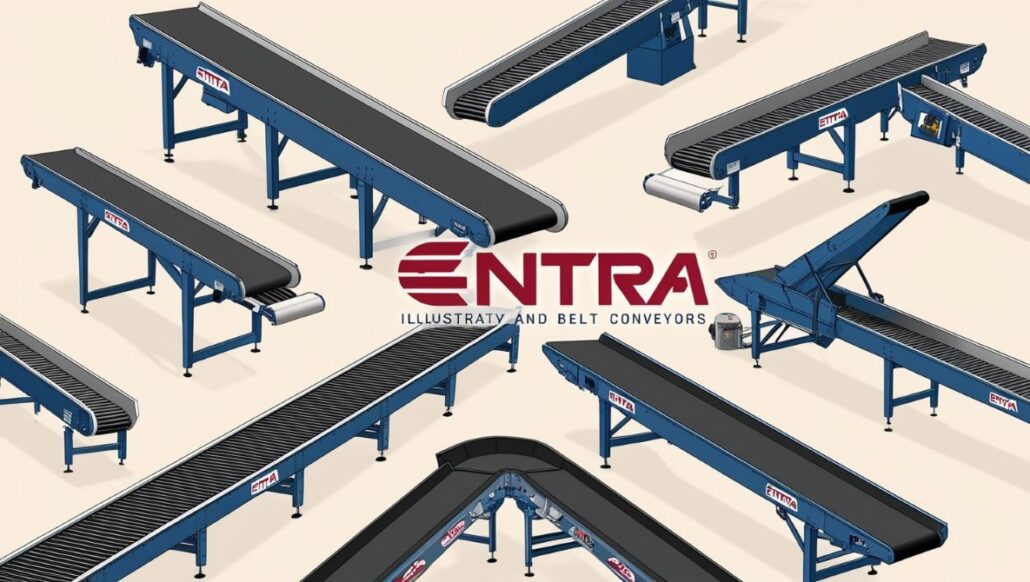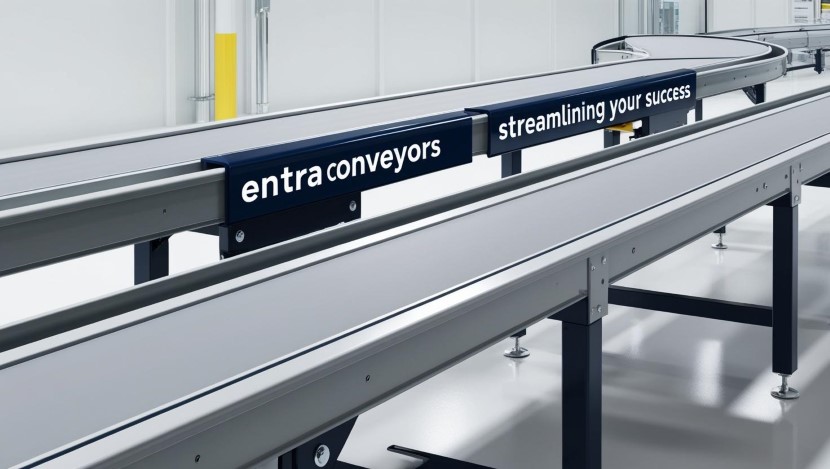ENTRA Belt Conveyors: A Comprehensive Guide
Belt conveyors are a fundamental component of material handling systems, widely used across various industries to efficiently transport materials from one point to another. They consist of a continuous belt that moves over rollers or pulleys, carrying the load along a predetermined path.

Key Components of a Belt Conveyor:
- Belt: The heart of the system, responsible for carrying the load. It can be made of rubber, PVC, or other durable materials, depending on the application.
- Idlers: These support the belt and ensure smooth movement. They can be fixed, troughed, or impact-resistant, depending on the specific requirements.
- Drive Pulley: Powered by a motor, this pulley drives the belt and imparts the necessary power to move the load.
- Tail Pulley: This pulley guides the belt and maintains tension.
- Frame: The structural support for the entire system, ensuring stability and rigidity.
- Motor and Gearbox: Provides the power to drive the system.
Advantages of Belt Conveyors:
- Efficiency: They offer high-speed, continuous material flow, maximizing productivity.
- Versatility: They can handle a wide range of materials, from bulk solids to packaged goods.
- Reliability: Well-designed and maintained belt conveyors are highly reliable and durable.
- Flexibility: They can be configured in various layouts to suit specific needs, including straight runs, inclined sections, and curved paths.
- Safety: Belt conveyors can be designed with safety features to protect workers and prevent accidents.

Types of Belt Conveyors
- Flat Belt Conveyors: These are the most common type, used for transporting materials in a straight line.
- Inclined Belt Conveyors: These are used to elevate materials to different levels.
- Decline Belt Conveyors: These are used to lower materials to different levels.
- Trough Belt Conveyors: These are used to transport bulk materials, such as coal, ore, and grain.
- Modular Belt Conveyors: These are highly flexible conveyors that can be easily reconfigured to meet changing needs.

Belt Conveyor Applications

Belt conveyors are used in a wide range of industries, including:
- Manufacturing: For transporting raw materials, components, and finished products.
- Mining: For transporting minerals and other materials from mines to processing plants.
- Logistics and Warehousing: For moving goods within warehouses and distribution centers.
- Food Processing: For transporting food products through processing lines.
- Packaging: For transporting products to packaging stations.
ENTRA: A Leader in Belt Conveyor Solutions
ENTRA has established itself as a leading provider of conveyor systems and automation solutions in Egypt and the Middle East. Their expertise in belt conveyor design, manufacturing, and installation has earned them a reputation for delivering high-quality, reliable, and efficient solutions.
Why Choose ENTRA?
- Customization: ENTRA offers tailored solutions to meet specific customer requirements, ensuring optimal performance.
- Innovation: They continuously invest in research and development to introduce innovative technologies and improve efficiency.
- Quality: ENTRA adheres to strict quality standards, using high-quality components and advanced manufacturing techniques.
- Reliability: Their systems are designed for long-term durability and minimal downtime.
- Expert Support: ENTRA provides comprehensive after-sales support, including maintenance, repair, and spare parts.
FAQ
Q: What are the key factors to consider when selecting a belt conveyor system?
A: When selecting a belt conveyor system, consider the following factors:
- Material to be conveyed: The type, size, weight, and abrasiveness of the material will determine the type of belt and idlers required.
- Capacity: The required capacity will determine the belt width and speed.
- Distance: The distance the material needs to be conveyed will determine the length of the conveyor.
- Inclination: The angle of inclination will affect the belt tension and power requirements.
- Environment: The operating environment, including temperature and humidity, will influence the choice of materials for the belt and other components.
- Budget: The overall budget will determine the level of automation and features that can be included in the system.
Q: How can I ensure the safety of my belt conveyor system?
A: To ensure the safety of your belt conveyor system, consider the following:
- Regular inspections: Conduct regular inspections of the belt, idlers, pulleys, and other components to identify and address any potential issues.
- Proper training: Train operators and maintenance personnel on safe operating procedures and emergency response.
- Safety guards: Install safety guards to prevent access to moving parts.
- Emergency stop buttons: Provide easily accessible emergency stop buttons.
- Clear signage: Use clear signage to warn of potential hazards.
- Regular maintenance: Perform regular maintenance to keep the system in good working condition.
Q: How can I optimize the performance of my belt conveyor system?
A: To optimize the performance of your belt conveyor system, consider the following:
- Proper belt tension: Maintain the correct belt tension to ensure smooth operation and prevent slippage.
- Regular cleaning: Keep the belt and idlers clean to prevent material buildup and reduce friction.
- Proper alignment: Ensure that the pulleys and idlers are properly aligned to prevent belt tracking issues.
- Lubrication: Lubricate the bearings and other moving parts as recommended by the manufacturer.
- Regular maintenance: Perform regular maintenance to keep the system in good working condition.
#BeltConveyor #MaterialHandling #ConveyorSystem #IndustrialEquipment #Logistics #SupplyChain #Automation #ENTRA #Egypt #MiddleEast
